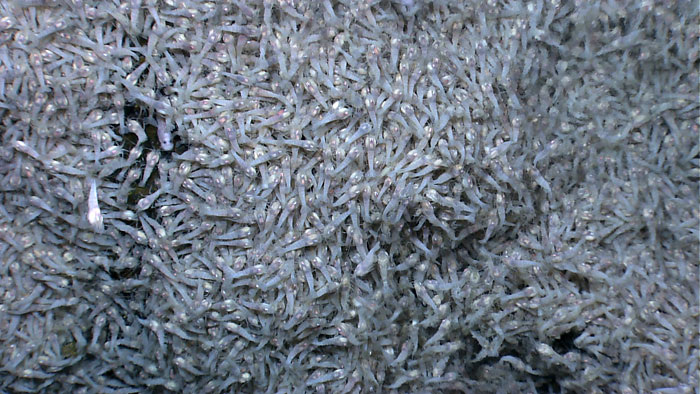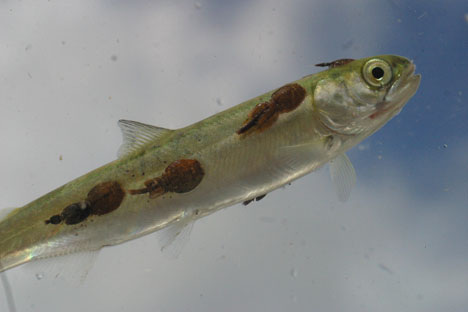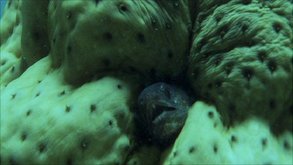|
SYMBIOTIC RELATIONSHIPS
Mutualistic relationships Rimicaris exoculata or pale shrimp live near black-smoker vents on the seafloor where ultra-hot fluids from Earth’s interior meet cold seawater. The shrimp’s mouths and gill chambers harbor a more diverse community of bacteria called epibionts that supply the shrimp with organic carbon and other nutrients. This is a mutualistic relationship because both organisms are benefiting from this. Read more Parasitic relationships Seabather's eruption or Sea lice are small marine parasites that occur naturally on many different species of wild fish including wild adult salmon. Sea lice are planktonic and are transported on the tide. When they encounter marine fish they attach themselves, usually on the skin, fins and/or gills and feed off the mucous or skin. Read more Commensalistic relationships An example of commensalism is the pearlfish and the sea cucumber.The pearlfish uses the sea cucumber for a hide-out from predators. The pearlfish will live in the sea cucumber’s anus, backing into the hole tail-first so its head can stick out.When a predator of the pearlfish comes by, it will bring its head in so it can’t be detected. The sea cucumber is unaffected by this activity. Read more |
Going through this information must have helped you understand what the different types of symbiotic relationships are. It is important to study these biological interdependence relationships as they give you a better picture of the Earth's biodiversity. Read more



